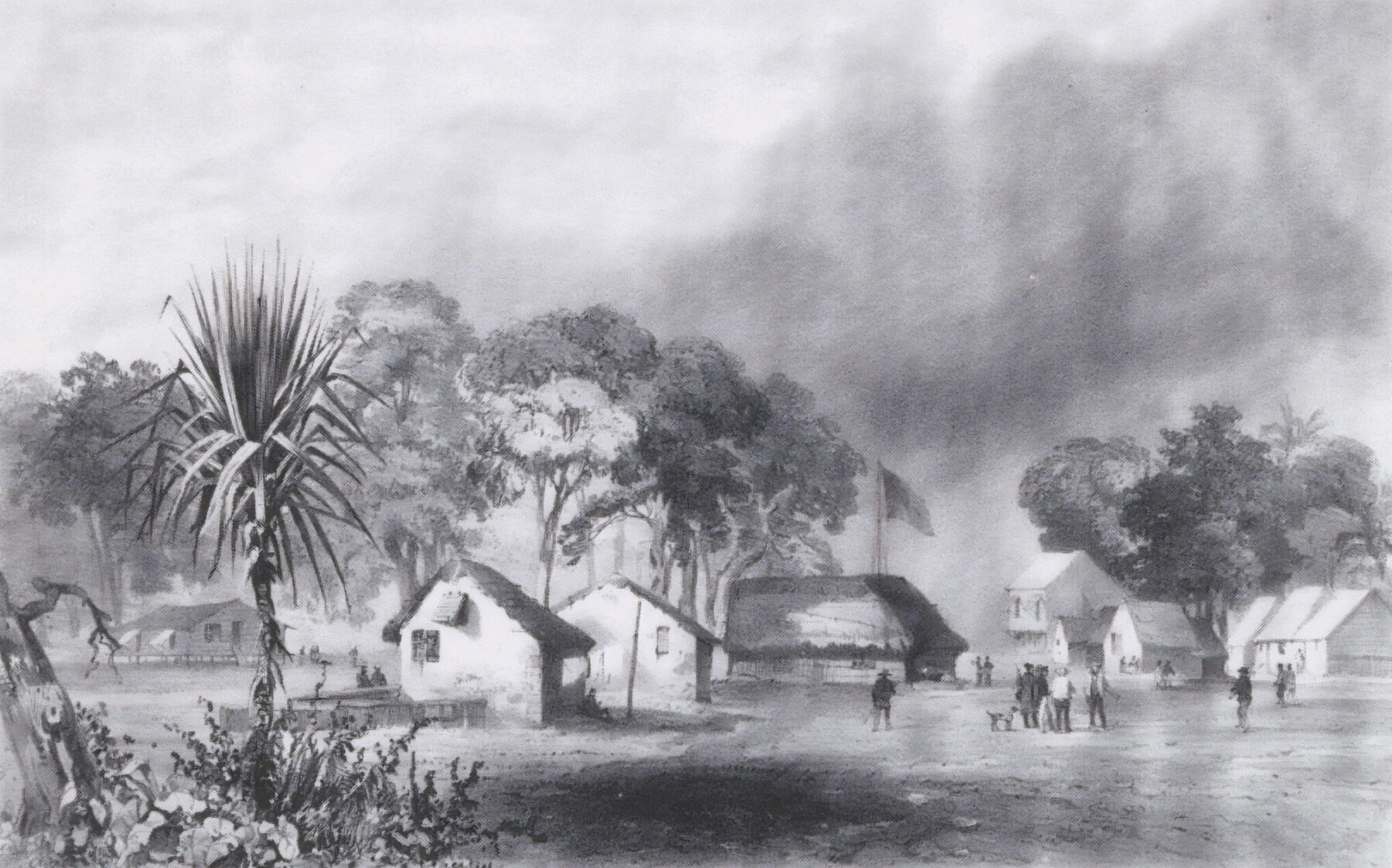Crumbling ruins tell colonial story of failed ‘second Singapore’ trade hub

Victoria Settlement was a fortified outpost designed to ward off rival colonial powers (namely the Dutch and French), with ambitious plans to establish trade routes with South East Asia and China and become a thriving commercial hub.
Since at least 1700, the Arnhem Land coast had been visited by fleets of Makassan traders (from modern-day Indonesia), who sourced trepang (sea cucumber) from its waters and sold it to China, where it was prized as a delicacy and aphrodisiac. Sensing an opportunity, the British dropped anchor. They boldly envisaged Victoria Settlement would one day become a “second Singapore”, but the modest surviving ruins tell a different story – crumbling walls and Cornish-style chimneys, foundations marred by weeds and scattered bricks, a handful of weathered tombs keeping vigil among unmarked graves.
Victoria Settlement was preceded by Melville Island’s Fort Dundas (1824–28) and Raffles Bay’s Fort Wellington (1827–29), two military settlements thwarted by disease, scurvy, sweltering climate, isolation and violent clashes with the Tiwi people on Melville Island. Undeterred, the British Royal Navy dispatched HMS Alligator and HMS Britomart to the Australian continent, captained by Sir J. Gordon Bremer and John McArthur. They set sail from Plymouth, England, on 19 February 1838, carrying some 50 Royal Marines, a handful of civilians, marine wives and their children. In Sydney they were joined by the barque Orontes, laden with prefabricated buildings (including Government House, two barrack rooms, a storehouse, hospital and church), food and other provisions. The three ships reached Port Essington on 27 October and dropped anchor.

Victoria Settlement’s history is a typical colonial story – remote military outpost struggles with limited resources, poor crop yields and rampant boredom. It was plagued by malaria, dysentery, scurvy and influenza. The Royal Marines toiled in the heat in thick British uniforms, and the garrison’s isolation took a mental toll. On 25 November 1839 a cyclone swept through the settlement, killing 12.
But Victoria Settlement is notable for the amicable relationship that developed between the British and the Iwaidja First Nations people, perhaps because the settlement was so small it didn’t threaten to impinge on Aboriginal territory. The Iwaidja showed the newcomers where fresh water was located, and soon began trading with the British, exchanging food – turtles, shellfish and the edible hearts of cabbage tree palms – for metal implements, tobacco, clothing and bottles. Settlers’ diaries and sketches reveal the two groups were deeply curious about each other, which soon matured into mutual respect. When the settlers abandoned the site 11 years later, the Iwaidja wept at their departure.
The garrison is also famous for its association with Ludwig Leichhardt, who stumbled into it on 17 December 1845 after travelling nearly 5000km from the Darling Downs in Queensland. The settlers nursed him back to health but the German explorer disappeared three years later, on his attempted east–west crossing of Australia.




